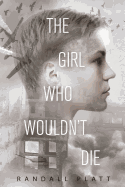
When Nazis conquer Poland in the fall of 1939, 16-year-old Abra Goldstein--known on the streets as the "Arab of Warsaw" ever since she forsook her "filthy-rich Jewish parents"--is determined to survive in any way possible. Tall, with blue eyes and chopped-off blonde hair, she masquerades as an Aryan boy, running with a gang of petty thieves. The occupation provides unlimited opportunities for her small-time black market business selling cigarettes and whatever else anyone wants, "from a Polish tart to Chopin's heart." Meanwhile, she keeps a discreet eye on her beloved younger sister, Ruthie, still living with their parents in the "posh" Jewish quarter. In her father's disgust at his older daughter's unseemly behavior--getting kicked out of her fancy school, stealing, joining a street gang--he has placed a gravestone in the cemetery with the inscription: "Abra Goldstein/ Gone and Forgotten." But Arab thinks of herself as "the girl who wouldn't die" and spends the early war years proving this truth again and again, even when she is asked to take part in a dangerous act of resistance.
In fluid, almost contemporary dialogue and action, Randall Platt (The Likes of Me) never flinches from the violent, heartbreaking realities of Nazi-occupied Europe. The Girl Who Wouldn't Die is about the measures Jews, gay people and allies took to survive in a savage time--Arab wearing cynicism like armor, for instance. "Trust me," she tells a fellow street kid, "evil trumps good every time." It's possible, though, that even seemingly cold-blooded Arab has a heart bigger than the entire Jewish ghetto in Warsaw. Riveting. --Emilie Coulter, freelance writer and editor

